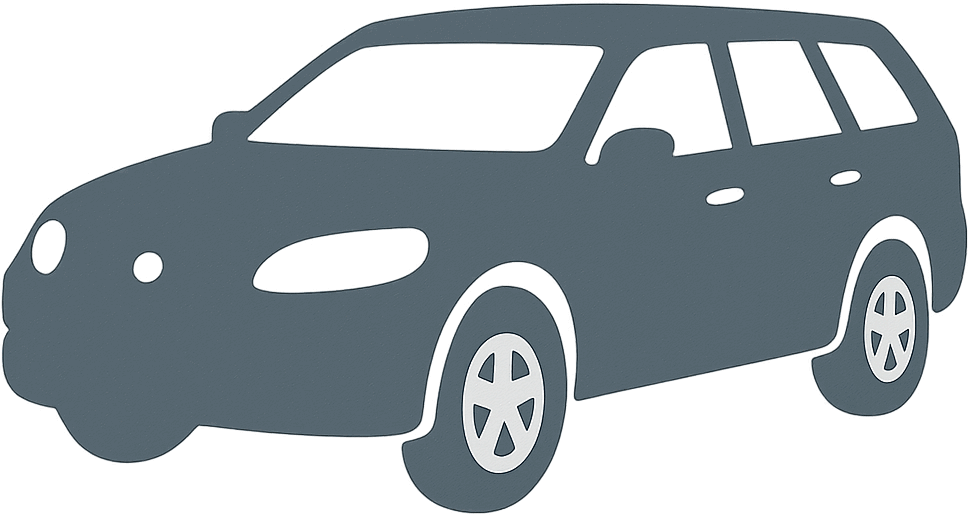 1998 Lada 21047 Dimensions, Size & Specs
1998 Lada 21047 Dimensions, Size & Specs
The Lada 2104 21047, produced from 1998 to 2012, is a classic Russian station wagon known for its practicality and robust design. Built as an extended version of the popular Lada 2105 sedan, the 2104 features a spacious cargo area suitable for families and utility purposes. The vehicle's design emphasizes simplicity and durability, characteristics that have helped it maintain a loyal following even decades after its initial release. The Lada 2104 measures approximately 4,230 mm (166.5 inches) in length, making it a compact yet functional wagon by contemporary standards. Its width stands around 1,660 mm (65.4 inches), providing sufficient interior space without sacrificing maneuverability in urban environments. The height of the vehicle is about 1,475 mm (58 inches), contributing to a balanced profile and ease of loading goods. The Lada 2104’s weight varies depending on configuration but typically hovers around 1,080 kg (2,380 lbs), reflecting its lightweight construction for the class. Under the hood, it offered modest engine options, emphasizing fuel efficiency and ease of maintenance over outright performance. The 2104’s utilitarian wagon body style, combined with its rear-wheel-drive layout, lends it a practical approach to everyday driving and cargo transport. Over its long production span, the Lada 2104 served as a reliable workhorse, especially appreciated in Eastern European markets for its affordability and straightforward mechanics. This station wagon remains a relevant model for those interested in a historically significant vehicle that blends compact dimensions with load-carrying versatility.
Discover the standout features that make the 1998 Lada 21047 a leader in its class
Have a question? Please check our knowledgebase first.
The Lada 2104 (21047) station wagon, produced from 1998 to 2012, has a length of approximately 4,190 mm (165 inches), a width of about 1,670 mm (65.7 inches), and a height near 1,530 mm (60.2 inches). These dimensions are typical for a compact station wagon of its era, offering a balanced footprint that is neither too large nor too small, accommodating its functional design as a family utility vehicle.
The curb weight of the Lada 2104 (21047) generally ranges between 1,100 kg to 1,150 kg (approximately 2,425 to 2,535 lbs). This relatively moderate weight contributes to its nimble handling and maneuverability for an older station wagon. However, the weight combined with its older suspension design means it is best driven at moderate speeds, giving drivers confidence in urban and rural settings without sacrificing too much on ride comfort.
The Lada 2104 (21047) offers seating for five passengers, with a functional and straightforward interior layout. The rear cargo area is one of its defining features, with an ample boot space of around 400 liters (approximately 14.1 cubic feet) when the rear seats are in place. Folding down the rear seats increases the cargo volume significantly, making it suitable for transporting bulky items, reflective of its station wagon design aimed at versatility.
Yes, the Lada 2104 (21047) fits comfortably into most standard residential garages. Given its compact length of around 4,190 mm (165 inches) and width of 1,670 mm (65.7 inches), it can easily be accommodated in a single-car garage. Standard garages typically offer lengths of 5,000 mm (197 inches) or more and widths around 2,400 mm (94 inches), so the Lada 2104 leaves enough space for opening doors and movement inside the garage.
The Lada 2104 (21047) is largely similar dimensionally to its predecessor Lada 2104 models, as it represents a continuation rather than a complete redesign. The main dimensions like length, width, and height saw no significant changes, maintaining the classic station wagon proportions that feature a length around 4,190 mm (165 inches). This consistency ensures that the newer 21047 generation kept the practical and utilitarian characteristics that drivers valued in earlier models.
When compared to similar compact station wagons from other manufacturers in the late 1990s and early 2000s, the Lada 2104 (21047) is somewhat modest in size. For example, competitors like the Volkswagen Golf Variant or the Opel Astra Caravan typically measure slightly larger in length, ranging between 4,200 mm to 4,350 mm (165 to 171 inches), and often present a more modern design with aerodynamic shapes. While the Lada may lag in sophistication, it holds its own in practical cargo space and simplicity, which makes it appealing in markets where ease of maintenance matters.
The Lada 2104 (21047) station wagon features a classic boxy exterior typical of Soviet-era vehicles, with a straightforward, utilitarian silhouette. The body emphasizes practicality, with large windows for excellent visibility and squared-off rear for maximizing cargo volume. The plain design approach mirrors its emphasis on function over flair, which makes it recognizable and appreciated for its rugged, no-nonsense appearance.
The Lada 2104 (21047) features a ground clearance of approximately 170 mm (6.7 inches), which is respectable for a station wagon of this class and time. This clearance enables it to handle moderately rough and uneven road conditions, including rural or unpaved roads, without too much risk of underbody damage. This characteristic aligns with its heritage as a robust vehicle suited to various driving environments found across Eastern Europe and Russia.
The Lada 2104 (21047) typically has a turning radius of around 5.2 meters (17 feet), which offers good maneuverability for a station wagon. This relatively tight turning circle helps the vehicle navigate urban environments, narrow streets, and parking lots more easily. The design supports practical city and rural driving scenarios without the bulkiness that larger wagons or SUVs might present.
The Lada 2104 (21047) was offered primarily with a range of inline four-cylinder engines, commonly featuring displacements from 1.3 to 1.7 liters. These engines typically produced modest power outputs suited for durability and fuel efficiency rather than high performance. The car was rear-wheel drive, paired with manual transmissions, emphasizing simplicity and ease of maintenance. Performance was adequate for everyday driving, with modest acceleration and a focus on reliability over speed.
